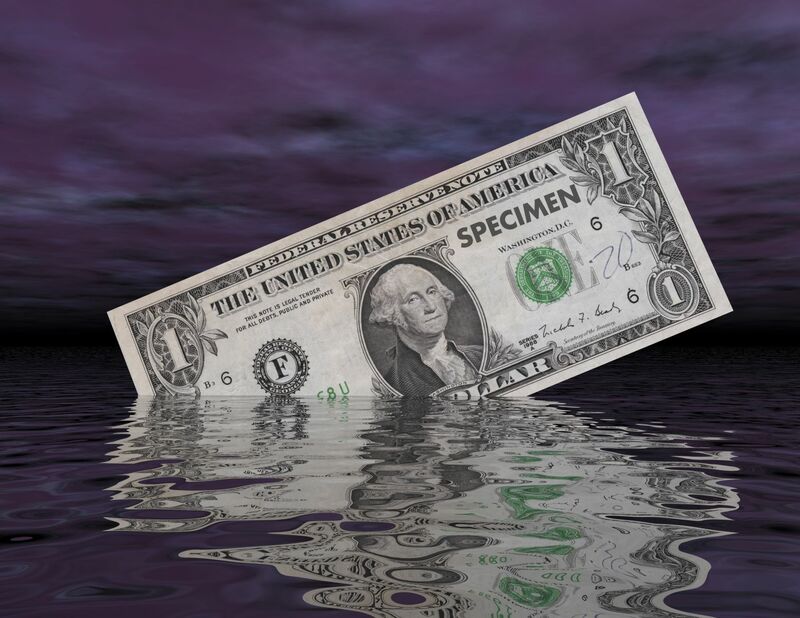
In a February 26, 2023, Barchart article, I pointed out that the 103.96 level on the nearby dollar index futures contract was the critical level. In that piece, I wrote:
When the dollar index broke out to the upside in May 2022, the break above the 103.960 technical resistance level led to a significant move to the 114.745 high. The technical resistance became support, giving way to the downside in early January 2023. So far, the index has held above the 100 level despite eclipsing the technical support. Still, the 104 level has become a significant pivot point for the index that measures the U.S. dollar against the other world reserve currencies.
At just under the 102 level on the nearby May dollar index futures contract on March 30, the index was below the technical pivot point but close enough to make the path of least resistance questionable. UUP and UDN are the bullish and bearish dollar index ETF products.
The rally ends- The dollar index remains in a bearish trend
The dollar index was below the 103.96 pivot point on March 30.

The chart of the nearby June dollar index futures contract was sitting at under the 102 level and trading in a bearish trend since reaching the highest level since 2002 at 114.745 in September 2022. The rally that began in January 2021 that took the dollar index to a twenty-year high ran out of upside steam. However, the longer-term bullish trend since 2008 remains intact at over 102.
Trading around the 104 level
The dollar index had been trading around its pivot point from mid-February through mid-March 2023.

The chart shows the sideways trading pattern around the pivot point as the dollar index searches for direction.
The case for a rising dollar index
The following factors support an increasing dollar index at the end of Q1 2023:
- Rising U.S. interest rates support the U.S. dollar against the other reserve currencies that comprise the U.S. dollar index.
- The euro is the leading currency in the dollar index, accounting for a 57.6% exposure. The ongoing war on Western Europe’s doorstep is a bearish factor for the euro and bullish for the dollar versus the European currency.
- Geopolitical turmoil has historically caused a flight to the U.S. dollar, the world’s reserve currency.
The dollar tends to benefit from the current economic and geopolitical landscapes.
The case for a continuation of the bearish trend
The global structure has changed since February 2022, which could weigh on the dollar index over the coming months and years. The following issues support a falling dollar index:
- The February 2022 “no-limits” alliance between China and Russia threatens the dollar’s role as the world’s reserve currency.
- China has been expanding its global influence with Saudi Arabia, Iran, South American countries, and other worldwide regions. China’s rise on the world stage threatens the dollar’s position.
- The rise in gold prices, flirting with the $2,000 level over the past weeks, is a sign of dollar weakness.
- Recent bank failures and the increasing odds of a recession will likely slow the trajectory of U.S. interest rate increases. With the Fed Funds Rate at 4.75% to 5.00% and the Fed’s target at the end of 2023 at 5.13%, the central bank’s transparent plans appear to include only one more 25 basis point increase over the next eight months.
The trend is always your best friend in markets across all asset classes, and the dollar index’s path of least resistance turned lower from the September 2022 114.745 high. Psychological support sits at the 100 level, which has held in 2023. A break below could lead to a more significant decline.
UUP and UDN are the bullish and bearish dollar index ETF products
The most direct route for a risk position in the dollar index is via the ICE futures contracts and options on the futures. The Invesco DB U.S. Dollar Index Bullish Fund (UUP) and its bearish counterpart (UDN) track the index on the up and downside.
At $27.78 per share on March 30, UUP had around $1.493 billion in assets under management. UUP trades an average of over 3.15 million shares daily and charges a 0.77% management fee.
The nearby dollar index futures contract rose from 89.165 in January 2021 to 114.745 in September 2022, a 28.7% increase.

Over the same period, UUP rose from $24.09 to $30.76 per share or 27.7%, the difference being the ETF’s expense ratio.
At $18.86 on March 30, UDN had $108.798 million in assets under management. UDN trades an average of 156,849 shares daily and charges a 0.77% management fee. The dollar index fell from 114.745 in September 2022 to a 100.680 low in February 2023, a 12.26% decline.

Meanwhile, UDN rose from $16.75 to $18.98 per share or 13.3% from the September high to the February low.
UUP and UDN do an excellent job tracking the dollar index higher and lower. As the currency markets move into Q2 2023, bullish and bearish factors pull the dollar index in opposite directions. The 104 level remains the pivot point, with support at 100 and resistance at around 106. Meanwhile, the current short-term bearish trend favors a test of 100, and a break could lead to much lower levels over the coming months.
On the date of publication, Andrew Hecht did not have (either directly or indirectly) positions in any of the securities mentioned in this article. All information and data in this article is solely for informational purposes. For more information please view the Barchart Disclosure Policy here.







